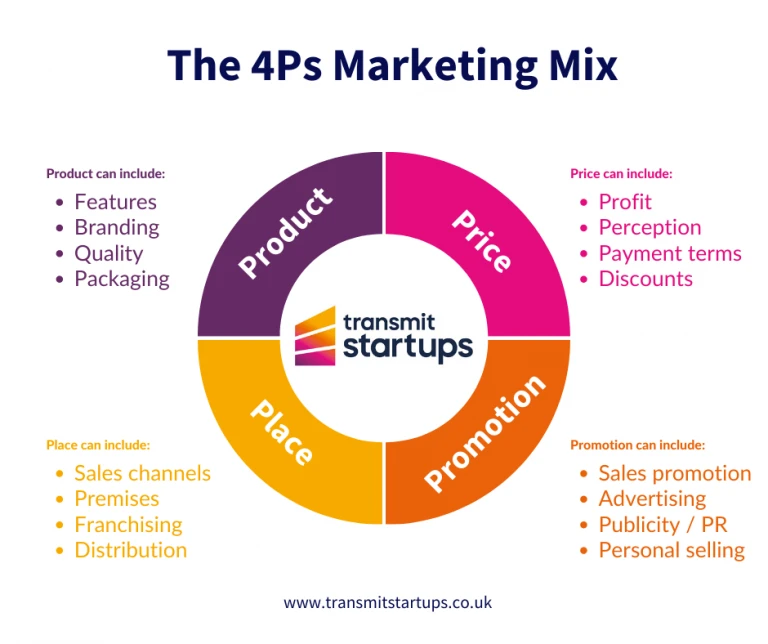Need help to review your marketing plan?
HOME / / Need help to review your marketing plan?
A marketing plan helps you focus on the opportunities you have as a business and the things that stand in your way.
As you shoot for the stars in 2023, Team Transmit are here to help you review yours.
In this article we'll cover "what is a marketing plan?" and how to create one. We'll consider when you might need to put your business into survival mode and cut back on marketing spend during the recession. We'll take you through a SWOT analysis, PEST analysis and recap on the 4Ps in the Marketing Mix. Finally, we'll consider ways to realise your business ambitions whilst keeping to a realistic budget.

What is a marketing plan?
A marketing plan helps you work towards specific targets and get ahead of the competition. You don’t have to be a marketing genius to create a plan. Just taking the time to think it through can be beneficial.
If you’ve already got a marketing plan, there are a few key areas that will benefit from an update for the current economic landscape. If you haven’t got a marketing plan, now is a great time to do one. Check out our FREE guide to writing a marketing plan and marketing plan template.
1. Goals
For a marketing plan to work, you need to know what it is you’re trying to achieve.
Now might be a good time to review the goals for your business and set realistic targets based on how customer trends are changing in response to rising energy bills and the cost-of-living crisis.
If your business was set up before Covid, you may need to put some of your post-pandemic recovery plans back into action for a while. It's possible that growth will be slow, and it's is ok to aim to survive.
Our friends at Smarta have some helpful guidance:
Is it time to put your business into survival mode?
In business, and in life, it’s not realistic to expect to thrive 100% of the time. But the business landscape hasn’t been this bumpy since, well… ever.
Our economy will bounce back, and small businesses will grow and thrive. But until then, flicking the switch to survival mode might be a good idea.
Should you cut back on marketing in a recession?
In any kind of economic downturn, marketing is always the first area where businesses look to reduce spend. But marketing leads to customers, and customers buy your products and services, and are the very reason your business exists… so if you must cut, then follow the rules of joiners the world over: ‘measure twice, cut once’.
Look at the numbers
Measure the number of leads coming in and how often they convert to paying customers, the number of sales you're making each month and price of your product/services. Weigh this up against the cost of the marketing activities you're using to attract those leads – and be sure that if you’re cutting costs here you can justify it with data.
2. SWOT analysis

Who would ever have thought to include global pandemic in their business SWOT analysis? Kudos to you if you saw Covid coming and had a contingency plan!
Changes in our economy which impact your business can occur quite suddenly, and one positive thing we've taken away from the pandemic is that more of us are actively working on our personal resilience and the organisational resilience of our businesses.
If you put the work in to prepare while everything's going well, you'll be much better equipped to cope when thing get tougher.
Your SWOT analysis is an opportunity to consider the strengths, weaknesses, opportunities and threats that can help or hinder your business. It’s a great tool to help you think of ways to move forward.
Threats will include some universal issues such as:
another lockdown
ongoing social distancing
staff ill health
low consumer confidence
reduced customer spending
Opportunities could include:
diversifying your offer
meeting a new customer need (solving a new problem for people)
adding an online income stream
harnessing new technologies
recruiting new staff who were previously unavailable
What impact will these things have on your business? How can you use your strengths and opportunities? How can you minimise the threats and weaknesses?
You could also complete a PEST analysis for more in-depth insights into the situation.

3. The Marketing Mix
The marketing mix is a group of factors that, combined and optimised to suit your business, help you achieve your goals. At its most basic level, it includes 4Ps – product, price, promotion and place. All four of these need reviewing in light of big market changes such as pandemics and economic downturns.
Product
What are you offering? Is it a product or a service?
Is it still available to stock / viable to produce?
Is it still needed / desirable in the current climate?
Are alternatives a better proposition now?
Are you still servicing the same customers / market?
How could you make it more attractive?
Can you diversify your income streams? What else could you offer?
Can you pivot? What else could you do?
Is there a new niche that your product could be perfect for?
Price
Is your current pricing still competitive and attractive?
Have your customers been affected financially by the pandemic; can they still afford you?
Do issues in your supply chain impact what you need to charge?
Can and should you offer discounts or incentives to encourage custom?
Can and should you increase prices to help your cash flow?
What impact will price changes have on public perception and demand?
Could you charge higher prices if you make greener financial decisions for your business?
How can you communicate about price changes positively?
Can you develop any passive income streams?
Promotion
Is your promotional mix still appropriate?
If you have pivoted (for example, from B2B to B2C, or from in-person to online services), are you using the right channels and messages?
Can and should you switch to more affordable forms of promotion?
Can and should you invest more in promotion to win business?
Have the costs of promotion changed and, if they have, can you capitalise on that?
Place
Are you delivering services and products in the right place?
How is your 'store front' affected by the pandemic and can you mitigate the effects?
Can and should you move services online?
Can you negotiate improved terms for your premises to help cash flow?
Are your suppliers and distributors still in business and operating on the same terms?

4. Budget
Look at your financial forecasts, cash flow and budgets. Taking a long hard look at things now could help you stay on a firm financial footing. Could you:
Consider lower cost marketing options
Consolidate your products to a smaller but more successful range
Focus on doing less but doing it better – niche-ing
Change suppliers to reduce costs
Defer planned investments and use the money for other priorities?
This article on using your cashflow forecast for decision-making is a good place to start.
If you want to get to grips with some of the topics discussed in this post, there are lots of great articles on marketing, market research, sales, cash flow and more on Smarta's Resources page.


"We’re delighted to be the 2000th loan recipients!"
